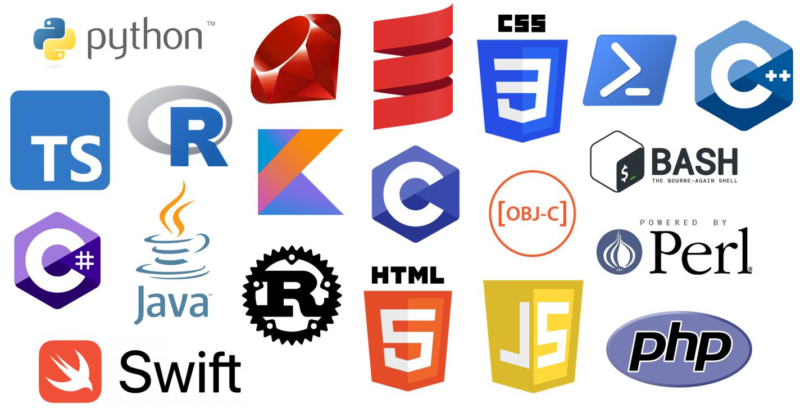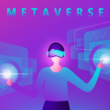In our technologically-driven world, programming languages are the tools we use to make computers do what we want them to do. Whether it’s making a website or creating an AI, different tasks require different tools. As we move through 2023, some tools have proved more useful than others. This blog post will explore the top 10 programming languages worth learning this year, focusing on what they’re used for and why they’re so popular.
Nam condimentum varius justo
- 1. Python
- Python has a reputation for being one of the easiest languages to learn, thanks to its clear, readable style. This simplicity makes Python a popular choice for beginners. But don’t be fooled – Python is incredibly powerful. It’s widely used in areas like web development, data analysis, artificial intelligence, and machine learning. Companies like Google and NASA use Python for everything from web apps to scientific research, showing its versatility.
- 2. JavaScript
- JavaScript is essential for anyone interested in web development. It’s a client-side language, meaning it runs in your web browser and handles anything interactive on a webpage. Without JavaScript, websites would be static and dull. Learning JavaScript opens up opportunities in front-end web development, and with the rise of Node.js, you can use JavaScript on the server-side too.
- 3. Java
- Java is a general-purpose language that’s been around since the ’90s but is still widely used today. It’s designed to work across platforms, meaning a program written on a Mac will work on Windows and vice versa. This compatibility makes Java a popular choice for large-scale business applications. It’s also the primary language used for Android app development, so if mobile apps are your thing, Java is worth learning.
- 4. C#
- C# (pronounced ‘C sharp’) was developed by Microsoft and is primarily used on the .NET framework. It’s used to develop a wide range of applications, including Windows desktop apps, games using the Unity game engine, and even mobile apps via the Xamarin platform. C#’s versatility and integration with the Microsoft ecosystem make it a solid choice for a variety of projects.
- 5. Swift
- If you’re interested in iOS app development, Swift is the way to go. Introduced by Apple in 2014, Swift is a relatively new language designed to be easier to use than Objective-C, its predecessor. Swift is used to develop applications for Apple devices, including the iPhone, iPad, and Mac computers. With the popularity of these devices, knowing Swift could land you a job in the lucrative mobile app development market.
- 6. Kotlin
- Kotlin is another language used for Android app development. Introduced by JetBrains in 2011 and officially supported by Google, Kotlin works seamlessly with Java and is often considered a more modern, cleaner alternative. If you’re planning to build Android apps, learning Kotlin is a good move.
- 7. Rust
- Rust is a system-level language designed for creating reliable, high-performance applications. It’s similar to C++ in its capabilities, but it has safety measures to prevent common programming errors that can lead to system crashes or security vulnerabilities. Rust has been voted the “most loved” language in the Stack Overflow Developer Survey for four years running, so it might be worth checking out.
- 8. TypeScript
- TypeScript is a “superset” of JavaScript, meaning it adds extra features to the language while still working with regular JavaScript code. TypeScript’s main advantage is its strong typing system, helping catch errors before the code is run. It’s widely used in large-scale web applications and might be beneficial if you’re looking to level up your JavaScript skills.
- 9. R
- R is a language specifically for data analysis and visualization. If you’re interested in data science, machine learning, or statistical analysis, learning R could be a good move. It has powerful libraries and tools that make it easier to crunch numbers and make sense of large datasets.
- 10. Go
- Go (also known as Golang) is a language developed by Google. It’s designed to be simple and efficient, making it perfect for web servers, data pipelines, and even AI. Companies like Uber and Twitch use Go because of its performance and efficiency. If you’re into backend development or data processing, Go could be worth a look.
In conclusion, the world of programming is as exciting and diverse as it has ever been. Each language we’ve covered in this blog post has a distinct role in the technology industry and serves different needs. Whether you’re an aspiring data scientist, a future app developer, a hopeful game designer, or simply an enthusiast looking to delve into the world of coding, there’s a language out there that’s perfect for you. Remember, the best programming language to learn is often determined by what you want to achieve, your project requirements, or your career goals.
In the rapidly evolving tech industry, learning a programming language can offer significant opportunities and open up new pathways. As we continue to depend more and more on digital solutions, the demand for skilled programmers across these languages is only expected to grow. So, embrace the challenge, choose a language, and start your programming journey today. Remember, every expert programmer was once a beginner. Happy coding!










